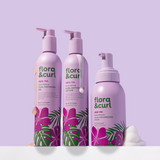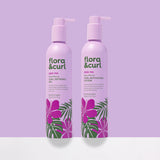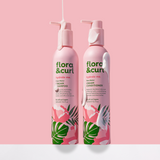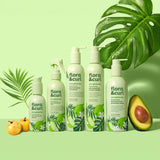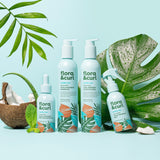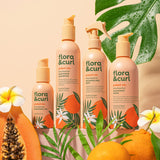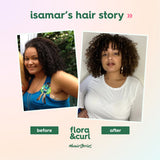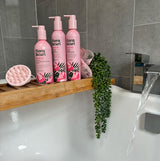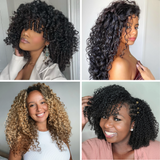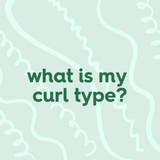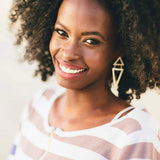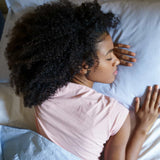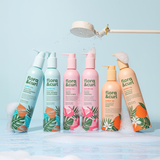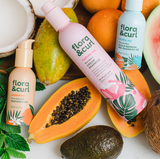

Juliana Kasumu
From afros, to braids, to every coil and curl, Black hair has always been an important part of Black history and its culture. While politics, pop culture and the media have played a part in Black history, our hair is part of our personal identity.
As early as the 15th century, black communities around the world have created their own sense of style, quickly becoming a part of their identity. Spanning all the way from the ancient world, Black hairstyles will continue to weave its way through politics, social and cultural conversations.
Let’s take it back by looking at some of the Black hairstyles that we have seen evolve throughout the years.
The Afro

Away of showing up and showing out without having to say a word.
Originating from political change, the afro is one of the most recognisable and an icon of Black culture. The late 1950s early 1960s has been seen as a movement with Black Power, Civil Rights and the Black is beautiful movements. Sparking a sense of independence and self acceptance.
After decades of being subjected to European beauty standards, Black people decided to take back their hair.
The classic afro, afro puffs and a cute TWA, are all styles throughout the years that have evolved, but with braided styles such as cornrows becoming more popular, the afro is slowly making a come back with mainstream culture.
Bantu knots

Michel Huet/Gamma-Rapho/Getty Images
Today the Bantu Knots style has been reinvented several ways. This hairstyle features small, coiled buns placed throughout the hair.
It is traditional African hairstyle created by the "bantu people" that spoke the bantu language. The term bantu is a generic name for more than 400 African ethnic groups. It is said to have originated centuries ago with the Zulu tribes. Covering a large part of southern & central Africa, this style has been around for over 100s of years. Passing down from generations to generations and offering a sense of pride and representation.
Braids

Amplifyafrica.org
Braids are not just a style, but a form of art.
As one of the most common protective hairstyles to date, it is used to protect the hair from heat, damage and giving your natural hair a break from everyday styling.
Braids originated from African culture, 3500 BC. It was a unique way to identify a persons wealth, religion, age and marital status. Not only this, but it would be a time where people would socialise due to the amount of time it took to braid. Elders would braid their children's hair while others watched and learnt in the process.
Beads, feathers and other hair ornaments have also played an important part within the history of braids. Inspired by cowrie shells used in West Africa.
It was around the 1900s that the braided hairstyle would make its way around the world, and hugely popular in 2005 with the launch of YouTube where braided tutorials became more popular.
The Jheri Curl

Popularised my Micheal Jacksons Thriller album, the Jheri Curl has been known as a cultural staple for the Black community.
Introduced in the 1970s, the Jheri Curl provided a curly and glossy look that became very unique within its time. Original invented by Jheri Redding, an Irish - American hair care entrepreneur, his products created a two-step process that first softened the hair, then watched the curls form.
Even though Redding had created the Jheri Curl, it was Black entrepreneur Comer Cottrell who adapted the look for the Black community.
The Relaxer

"Beauty is pain".
Has anyone else heard of this expression?
Before chemical treatments were a thing, using heat was a way many would use to get that sleek and straight look. First came the butter knife, then the hot comb and now the flat iron or straighteners.
African American women has always been challenged with the natural texture of their hair and what hair is acceptable in society, where in the 1950s, it was expected for Black women to straighten their hair.
Although the thought of sometimes having straight hair is nice, the chemical process of straightening Black hair isn't always comfortable. Beginning more than 100 years ago, the first hair relaxer was invented by Garret Augustus Morgan.
Whether you wear your hair naturally curly or in braids, invest in your your. It is the crown you will never take off. How do you like to wear your hair?
Naturally Yours,The Team at Flora & Curl
Continue Reading
-
Nov 12th 2025This National Healthy Skin Month, we are highlighting the importance of scalp care and the foundation for healthy curls.
-
Oct 31st 2025
Moisture for Your Curls: How to Keep Your Hair Hydrated & Moisturised
Thirsty curls? Let’s fix that. Here’s your guide to keeping every strand hydrated, healthy, and happy. -
Oct 24th 2025
Protein for Your Curls: Why Protein Matters
Discover why protein matters, and how it strengthens weak curls, exploring Flora & Curl’s Strengthen Me range to repair, protect, and restore y... -
Oct 22nd 2025
Protein vs Moisture: How to Find the Right Balance for Healthy Curls
What is the difference between protein and moisture within your hair care routine? Learn how to tell what your curls need to stay strong, soft, and... -
Sep 25th 2025
Strengthen Me: The Era of Stronger Curls Has Arrived
After three years in the making, it’s finally here! We are proud to announce the launch of our most anticipated collection yet: the Strengthen Me r... -
Apr 13th 2025
How To Enjoy Time At Home During Social Distancing
We understand that periods of uncertainty and information overload can make many people feel uneasy and out of a routine. We’ve rounded up a few wa...
